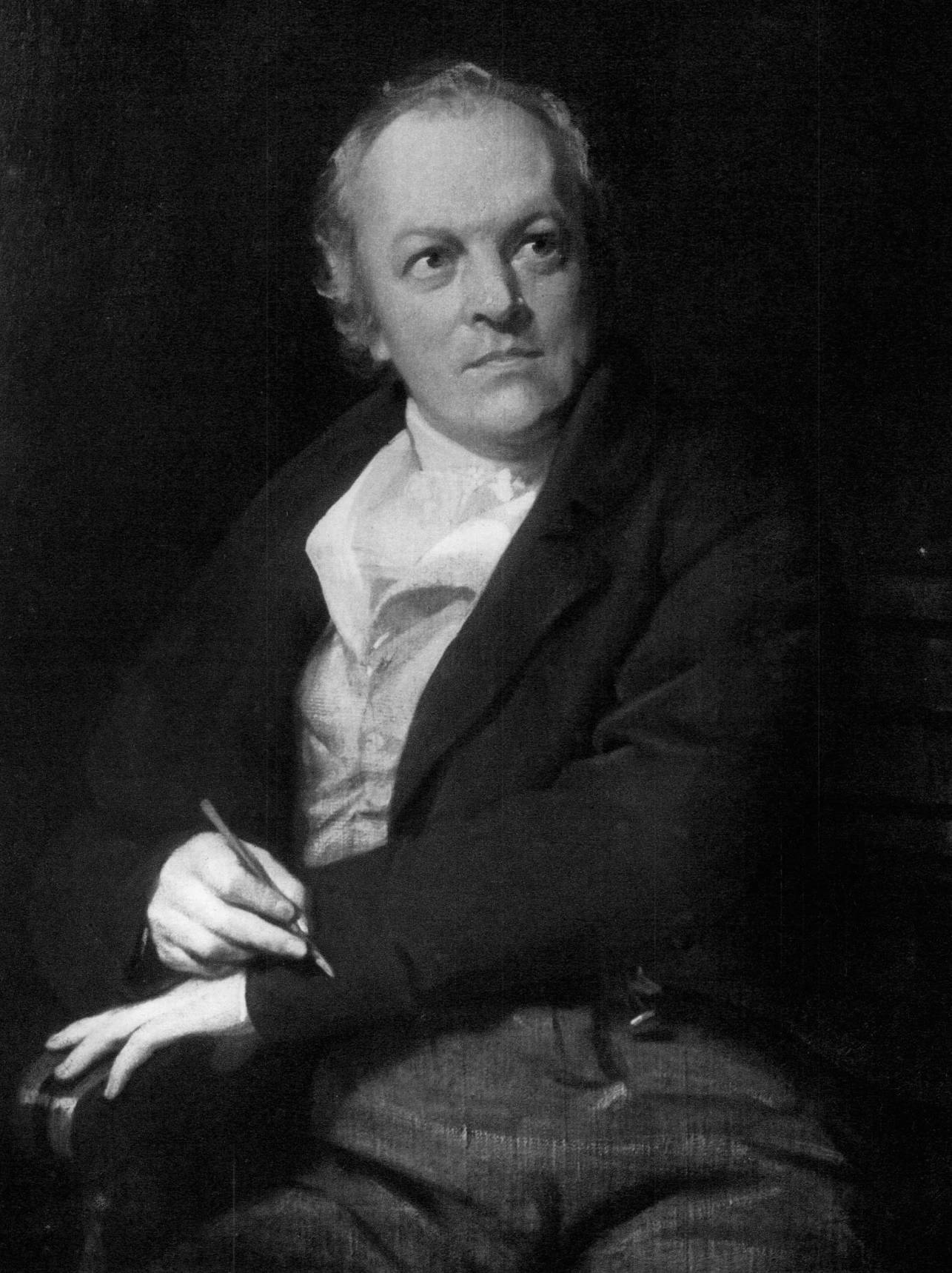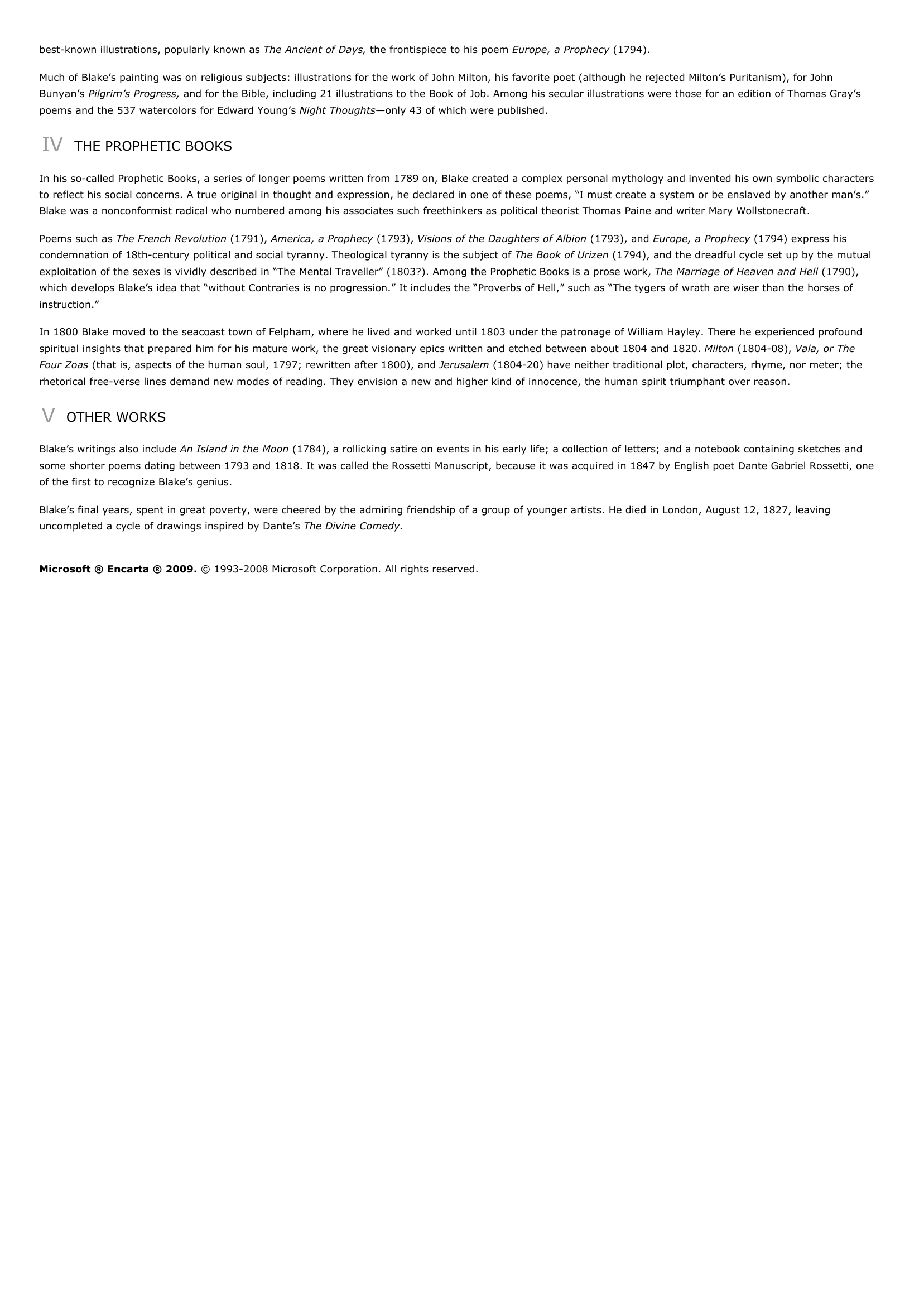William Blake.
Publié le 10/05/2013

Extrait du document


«
best-known illustrations, popularly known as The Ancient of Days, the frontispiece to his poem Europe, a Prophecy (1794).
Much of Blake’s painting was on religious subjects: illustrations for the work of John Milton, his favorite poet (although he rejected Milton’s Puritanism), for JohnBunyan’s Pilgrim’s Progress, and for the Bible, including 21 illustrations to the Book of Job.
Among his secular illustrations were those for an edition of Thomas Gray’s poems and the 537 watercolors for Edward Young’s Night Thoughts —only 43 of which were published.
IV THE PROPHETIC BOOKS
In his so-called Prophetic Books, a series of longer poems written from 1789 on, Blake created a complex personal mythology and invented his own symbolic charactersto reflect his social concerns.
A true original in thought and expression, he declared in one of these poems, “I must create a system or be enslaved by another man’s.”Blake was a nonconformist radical who numbered among his associates such freethinkers as political theorist Thomas Paine and writer Mary Wollstonecraft.
Poems such as The French Revolution (1791), America, a Prophecy (1793), Visions of the Daughters of Albion (1793), and Europe, a Prophecy (1794) express his condemnation of 18th-century political and social tyranny.
Theological tyranny is the subject of The Book of Urizen (1794), and the dreadful cycle set up by the mutual exploitation of the sexes is vividly described in “The Mental Traveller” (1803?).
Among the Prophetic Books is a prose work, The Marriage of Heaven and Hell (1790), which develops Blake’s idea that “without Contraries is no progression.” It includes the “Proverbs of Hell,” such as “The tygers of wrath are wiser than the horses ofinstruction.”
In 1800 Blake moved to the seacoast town of Felpham, where he lived and worked until 1803 under the patronage of William Hayley.
There he experienced profoundspiritual insights that prepared him for his mature work, the great visionary epics written and etched between about 1804 and 1820.
Milton (1804-08), Vala, or The Four Zoas (that is, aspects of the human soul, 1797; rewritten after 1800), and Jerusalem (1804-20) have neither traditional plot, characters, rhyme, nor meter; the rhetorical free-verse lines demand new modes of reading.
They envision a new and higher kind of innocence, the human spirit triumphant over reason.
V OTHER WORKS
Blake’s writings also include An Island in the Moon (1784), a rollicking satire on events in his early life; a collection of letters; and a notebook containing sketches and some shorter poems dating between 1793 and 1818.
It was called the Rossetti Manuscript, because it was acquired in 1847 by English poet Dante Gabriel Rossetti, oneof the first to recognize Blake’s genius.
Blake’s final years, spent in great poverty, were cheered by the admiring friendship of a group of younger artists.
He died in London, August 12, 1827, leavinguncompleted a cycle of drawings inspired by Dante’s The Divine Comedy.
Microsoft ® Encarta ® 2009. © 1993-2008 Microsoft Corporation.
All rights reserved..
»
↓↓↓ APERÇU DU DOCUMENT ↓↓↓
Liens utiles
- LIVRES PROPHÉTIQUES (Les) William Blake
- LIVRES PROPHÉTIQUES (Les) William Blake
- MILTON de William Blake - résumé, analyse
- MARIAGE DU CIEL ET DE L’ENFER (Le) de William Blake
- William Blake: Songs of Innocence (Sprache & Litteratur).












